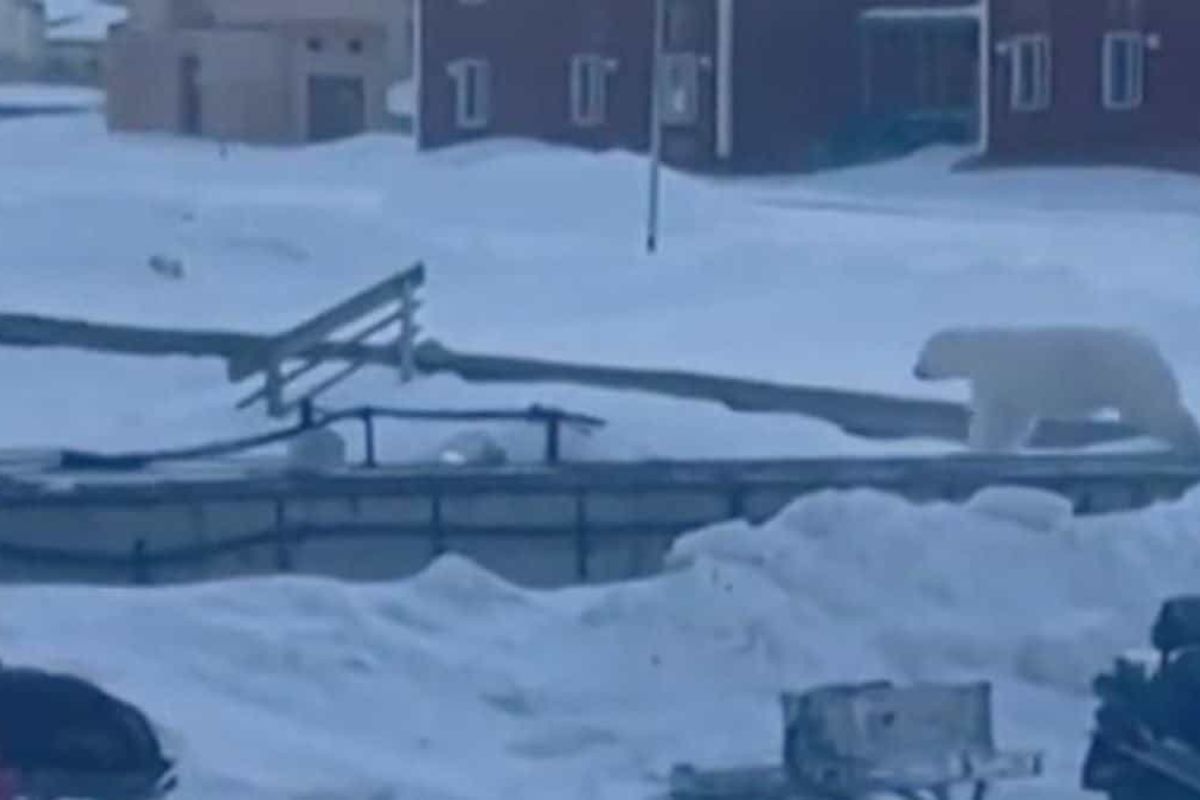Show table of content Hide table of content
A terrifying encounter between a man and a hungry polar bear in Norway’s Svalbard archipelago has captured worldwide attention after dramatic footage emerged showing the moment quick thinking saved the man’s life. The incident, which occurred on April 27, 2025, highlights the increasing challenges of human-wildlife interactions in remote Arctic regions where climate change continues to impact rare Arctic wildlife and their habitats as icebergs break off.
Survival instinct in Norway’s Arctic wilderness
The heart-stopping confrontation took place in Pyramiden, an abandoned mining settlement often referred to as the “Ghost Town of the North Pole.” A hotel staff member found himself face-to-face with one of the Arctic’s most formidable predators while outside the establishment. The encounter quickly escalated when the man’s initial attempts to scare off the bear using his rifle failed.
Instead of retreating, the massive white-furred carnivore charged directly at him. In a split-second decision that would ultimately save his life, the Norwegian dropped his weapon and leaped onto his snowmobile, speeding away from the pursuing bear. This rapid response mirrors other survival stories where quick thinking has meant the difference between life and death, such as when a husband jumped on a polar bear to protect his wife during an attack.
News This TikToker buys a used van and realizes it has a hidden surveillance device.
Rebecca Baack, a tourist staying at the hotel, witnessed and recorded the entire incident. “I woke up around midnight to someone shouting about a bear,” she recounted. “A staff member was trying to scare it away when the animal suddenly charged at him. Seeing him escape was an enormous relief.”
Following the man’s narrow escape, approximately 100 tourists remained confined indoors until authorities confirmed the predator had left the area. This incident demonstrates how wildlife conservation efforts must balance with human safety in regions where apex predators and humans increasingly share territory.
Hungry predator searching for food
After failing to catch the man, the polar bear’s behavior revealed its true motivation—hunger. The animal immediately began searching for food around the hotel premises, eventually discovering edible items stored on one of the establishment’s snowmobiles. This foraging behavior illustrates the challenging circumstances facing polar bears as their traditional hunting grounds diminish.
Wild animals, when desperate, will often seek alternative food sources, sometimes putting themselves in danger. Similar stories of animal survival against difficult odds have been documented, like lone dogs adapting to survival in forests or dogs rescued from dire circumstances finding new lives.
“Once it finished eating, it left town and headed back toward the sea ice,” Baack reported. This natural return to its habitat suggests the bear wasn’t actively seeking human confrontation but was primarily motivated by hunger—an increasingly common situation as climate change disrupts traditional feeding patterns.
Wildlife experts note that polar bears typically hunt seals on sea ice, but as Arctic ice diminishes due to global warming, these predators face greater challenges finding food. This ecological disruption is part of broader environmental concerns, similar to how large-scale human interventions can permanently alter ecosystems.
Arctic wilderness safety protocols
The Svalbard archipelago and Barents Sea region are known habitats for polar bears, with local tourism agencies emphasizing strict safety guidelines for visitors. Visit Svalbard, the official tourism organization, describes these animals as “powerful and unpredictable predators” that can “attack very rapidly and without warning.”
To mitigate risks, the organization strongly advises travelers to be accompanied by local guides armed with firearms when venturing outside designated safe zones. This incident underscores the importance of these protocols, which are designed to protect both humans and wildlife.
News Bat wings after 50? Here’s the most effective exercise, according to a coach.
Educational efforts about wildlife behavior play a crucial role in preventing dangerous encounters. Animals often display remarkable intelligence and adaptability, as seen in stories where crows demonstrate gratitude and complex behavior toward humans who help them.
The Norwegian man’s experience serves as a powerful reminder of the respect required when exploring polar regions. His ability to remain calm and make split-second decisions likely prevented a tragedy. Wildlife experts recommend making noise when traveling in bear country, carrying deterrents, and always maintaining awareness of surroundings.
In communities where humans and wildlife coexist, mutual protection efforts become essential. Some animals, like certain dogs recognized for their contributions to saving other animals, demonstrate how interspecies relationships can be beneficial when properly managed.
The Pyramiden incident highlights the delicate balance between human activity and wildlife conservation in Arctic regions. As climate change continues to alter these environments, developing sustainable coexistence strategies becomes increasingly vital for protecting both human lives and endangered polar bear populations.


